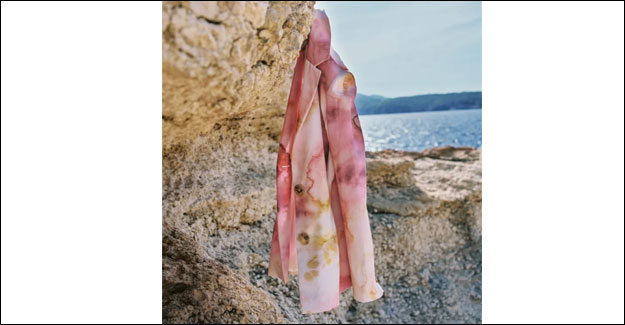
MMCF Innovations Are Improving Environmental Footprint Of Fashion
Olistic The Label has developed a mix of cupro and Tencel Luxe, a new blend of plant fibre that sits at the vanguard of material innovation. It feels like a traditional luxury fabric but is sourced from sustainable, quick-growing softwood forests and turned from pulp into yarn in a closed-loop process (meaning the water and solvents used are continuously recycled within the factory). Man-made cellulosic fabrics (MMCF), including rayon, viscose, lyocell and cupro, have been a petrochemical-free option for some time. They use plant pulp sourced from ancient forests that are replanted with quick-growing tree plantations, or agricultural by-products such as pineapple or coconut. They use less water than cotton and can be responsibly produced in a closed-loop process. Until now, the quality of these MMCFs has not been deemed luxurious because of the way the fibres have to be shortened. Tencel Luxe, however, is a continuous filament, allowing for fabrics as soft and shiny as silk and as lightweight as organza. Viktor & Rolf has just made a couture collection predominantly using it, and designers from Olistic The Label to Bav Tailor are showcasing its flexibility. However, the virgin material still needs to be grown from trees, where it takes between two and a half and three tonnes of wood to make one tonne of pulp. The tree plantations are often a monoculture, which does not solve any biodiversity problems, and chemicals and water are still required for processing. New ideas in the mix include a nanocellulose where the raw material is bacteria-grown in a lab, and a technology from Finland’s Spinnova that uses eucalyptus wood as a feedstock, and has received investment from Ecco and Adidas. NGO Canopy Planet founder and executive director Nicole Rycroft says, “What we need now is an accelerant.” Vedra Partners has stepped in as an impact fund to grow next generation solutions, including an MMCF where the raw material is landfill textiles or agricultural residues: “150 billion items of clothing are produced every year, with 60% ending up in landfill in the first 12 months,” says Rycroft. “To get from where we are today to these low-carbon, low-footprint, next-gen solutions, there is a price tag: $64 billion to replace 50% of wood fibre to low-carbon alternatives.” With Kering and LVMH signed up in support of Canopy Planet’s initiatives, the impact fund is currently focusing on raising capital. “Luxury brands have the ability to show these next-gen solutions can be part of exquisite clothing,” adds Rycroft. Two new materials that Rycroft thinks could change the shape of the industry are Renewcell, which harnesses “textile-to-textile technology”, and Nanolose, which uses an enzymatic process, turning food waste into cellulose. This may not be as exciting as some of the more exotic fabric innovations sitting in the labs but, as Rycroft points out, “Not all cactus leathers are going to make it successfully to market. We are at a point in time when it has to be about the art of the possible and scaling the technologies that are going to be most successful.”
Textile Excellence
If you wish to Subscribe to Textile Excellence Print Edition, kindly fill in the below form and we shall get back to you with details.








